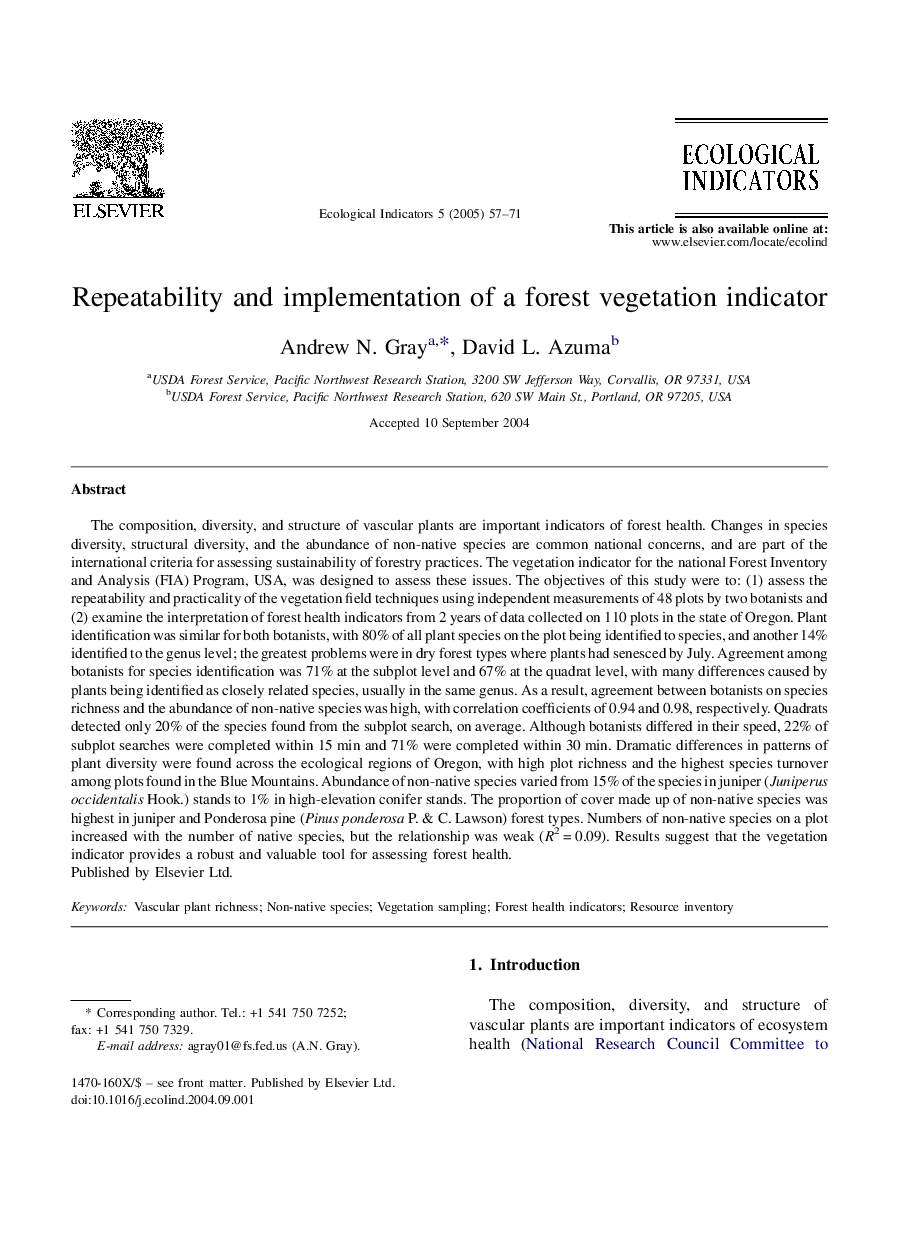| Article ID | Journal | Published Year | Pages | File Type |
|---|---|---|---|---|
| 9443244 | Ecological Indicators | 2005 | 15 Pages |
Abstract
The composition, diversity, and structure of vascular plants are important indicators of forest health. Changes in species diversity, structural diversity, and the abundance of non-native species are common national concerns, and are part of the international criteria for assessing sustainability of forestry practices. The vegetation indicator for the national Forest Inventory and Analysis (FIA) Program, USA, was designed to assess these issues. The objectives of this study were to: (1) assess the repeatability and practicality of the vegetation field techniques using independent measurements of 48 plots by two botanists and (2) examine the interpretation of forest health indicators from 2 years of data collected on 110 plots in the state of Oregon. Plant identification was similar for both botanists, with 80% of all plant species on the plot being identified to species, and another 14% identified to the genus level; the greatest problems were in dry forest types where plants had senesced by July. Agreement among botanists for species identification was 71% at the subplot level and 67% at the quadrat level, with many differences caused by plants being identified as closely related species, usually in the same genus. As a result, agreement between botanists on species richness and the abundance of non-native species was high, with correlation coefficients of 0.94 and 0.98, respectively. Quadrats detected only 20% of the species found from the subplot search, on average. Although botanists differed in their speed, 22% of subplot searches were completed within 15Â min and 71% were completed within 30Â min. Dramatic differences in patterns of plant diversity were found across the ecological regions of Oregon, with high plot richness and the highest species turnover among plots found in the Blue Mountains. Abundance of non-native species varied from 15% of the species in juniper (Juniperus occidentalis Hook.) stands to 1% in high-elevation conifer stands. The proportion of cover made up of non-native species was highest in juniper and Ponderosa pine (Pinus ponderosa P. & C. Lawson) forest types. Numbers of non-native species on a plot increased with the number of native species, but the relationship was weak (R2Â =Â 0.09). Results suggest that the vegetation indicator provides a robust and valuable tool for assessing forest health.
Related Topics
Life Sciences
Agricultural and Biological Sciences
Ecology, Evolution, Behavior and Systematics
Authors
Andrew N. Gray, David L. Azuma,
